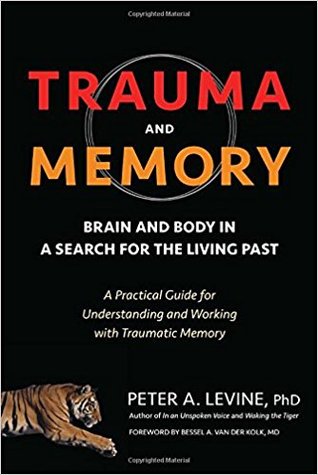More on this book
Kindle Notes & Highlights
Read between
February 25 - February 27, 2021
Most contemporary psychotherapies live in the long shadow cast by Freud and his descendants, or have been guided by various cognitive behavioral approaches. However, these avenues of alleviating human suffering are of limited value in work with trauma and its underlying memory imprints.
In contrast to “ordinary” memories (both good and bad), which are mutable and dynamically changing over time, traumatic memories are fixed and static.
Renegotiation is not about simply reliving a traumatic experience. It is, rather, the gradual and titrated revisiting of various sensory-motor elements comprising a particular trauma engram. Renegotiation occurs primarily by accessing procedural memories associated with the two dysregulated states of the autonomic nervous system (ANS)—hyperarousal/overwhelm or hypoarousal/shutdown and helplessness—and then restoring and completing the associated active responses. As this process progresses, the client moves from hypo- or hyperarousal, toward equilibrium, relaxed alertness, and a here-and-now
...more
The sequence of evoked motor patterns and their associated emotions is as follows: 1. Arrest and alert—associated with curiosity. 2. Stiffen and orient—associated with focused attention, interest, and preparedness. 3. Assess—associated with intense interest, friendliness, or repulsion. This assessment is informed by our genetic memory banks, as well as our personal histories. 4. Approach or avoid—associated with pleasure and displeasure.
In the more intense activation states, there is an abrupt shift to the powerfully compelling emotions of fear, rage, terror, and horror that erupt into all-out action, immobilization or collapse: 5. Fight-or-flight—experienced as fear. When these active responses are thwarted we: 6. Freeze, as in “scared stiff”—associated with terror. 7. “Fold” and collapse—associated with helpless/hopeless horror.


